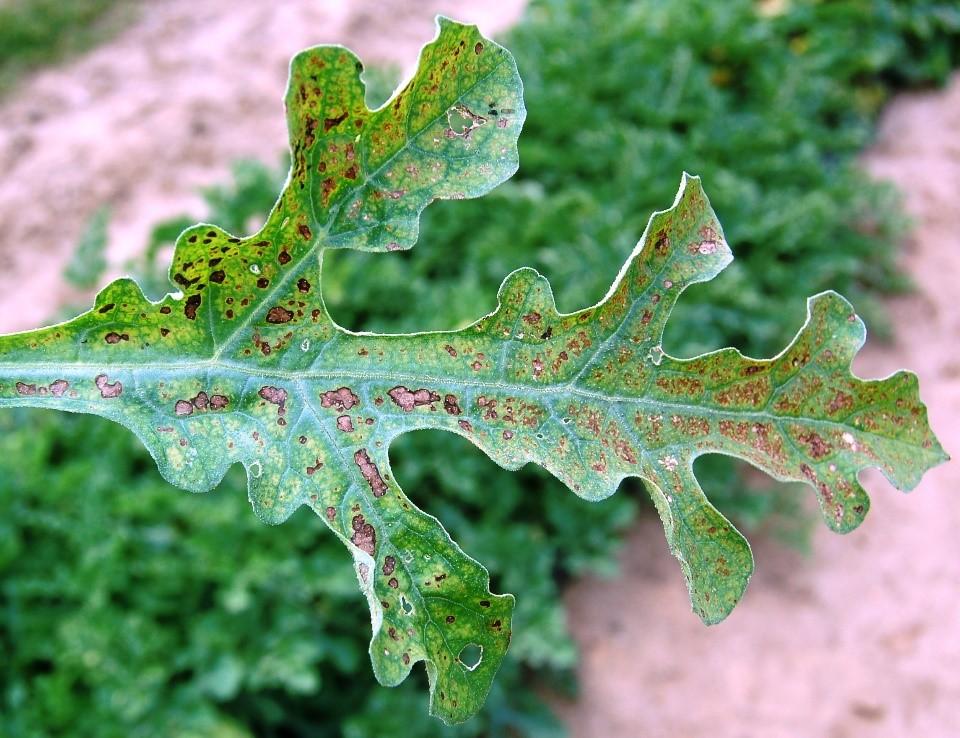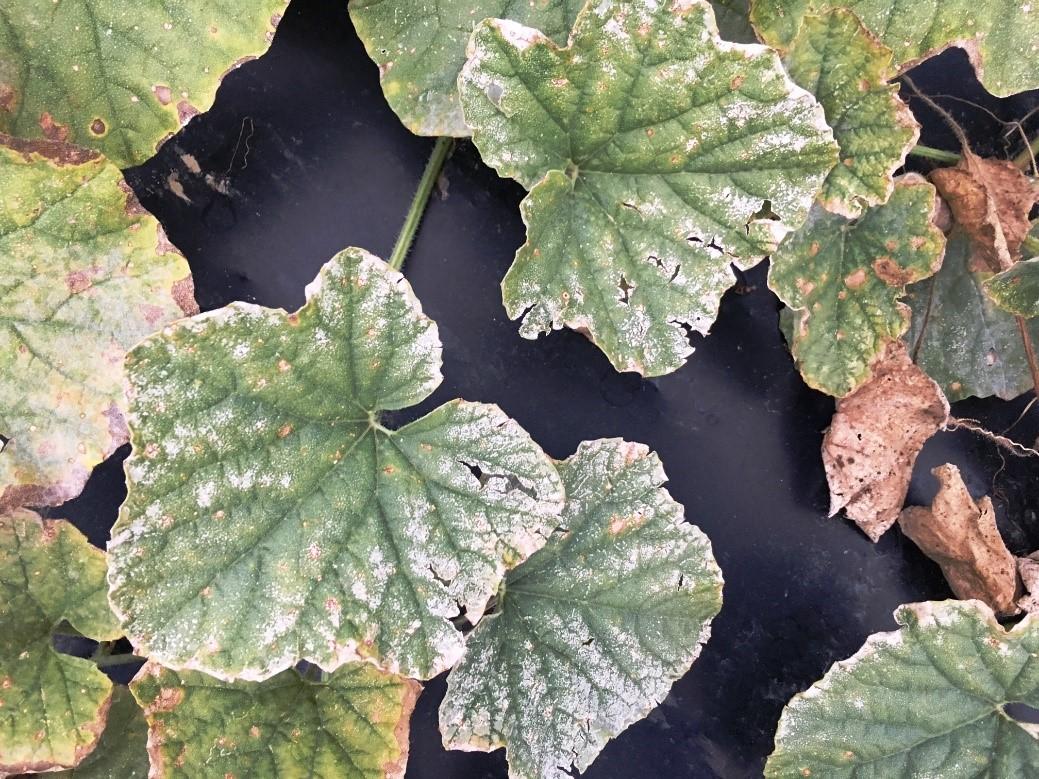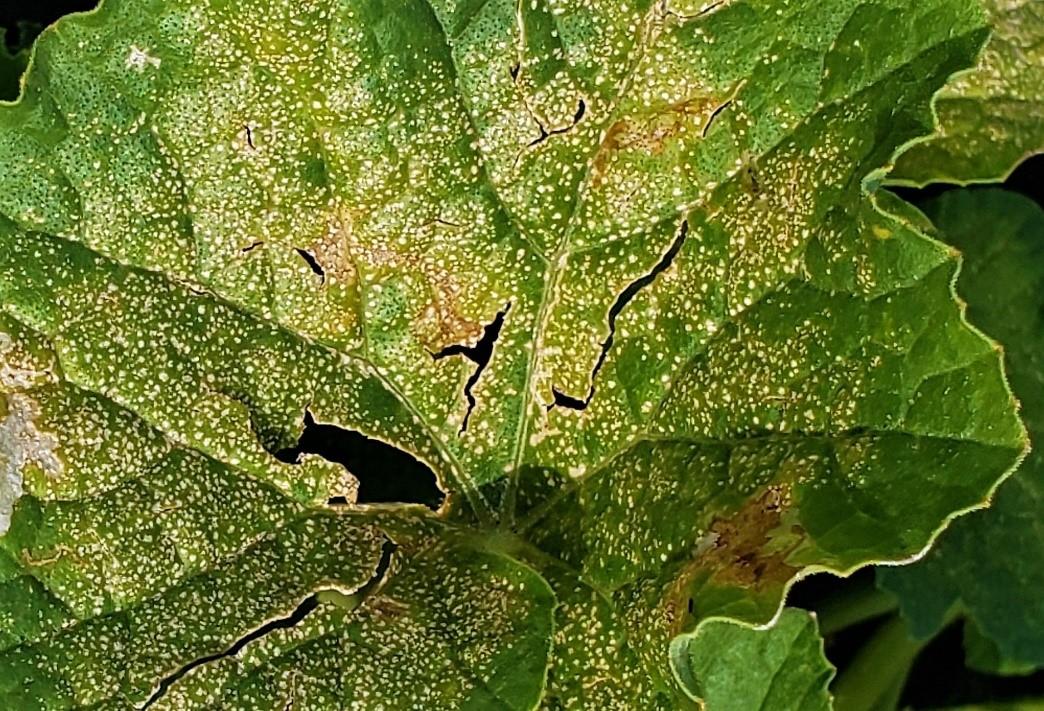Ozone damage to cucurbit foliage common now in mid-Atlantic
The weather for the last week or so in our area has been ideal for air pollutants to cause injury to vegetable crops, especially cucurbits. One of these air pollutants is ozone, which is considered to be the most damaging phytotoxic air pollutant in North America. Injury is most likely during hot, humid weather with stagnant air masses. Symptoms consist of small, irregular shaped spots or flecks that range in color from dark brown to black or light tan to white (fig.1). Symptoms also include stipples (small darkly pigmented areas approximately 2-4 mm in diameter), bronzing, and reddening. These symptoms usually occur between the veins on the upper leaf surface of older and middle-aged leaves, but may also involve both leaf surfaces for some cultivars. The type and severity of injury depends on the duration and concentration of ozone exposure, weather conditions, and plant genetics. Some or all of the symptoms can occur on vegetables under various conditions.


Symptoms on one cultivar can differ from the symptoms on another. With continuing ozone exposure, the symptoms of stippling, flecking, bronzing, and reddening are gradually replaced with chlorosis and necrosis (fig. 2). Early ozone foliar damage can resemble spider mite injury. The presence of mites can be confirmed by examining the underside of the leaf. Mite populations would have to be comparatively great (>45/leaf) to cause the type of leaf injury shown in figure 2. As the exposure to ozone continues the spots may fuse forming larger damaged areas (fig. 3). Due to the tissue collapse induced by ozone, leaves are prone to infection by pathogens such as Alternaria sp (early blight) and will senesce sooner. Symptoms of ozone damage can appear on one side of a plant or stem depending on the source of pollution and micro-climate.
The injury pattern on watermelon foliage is initially observed on older mature leaves near the crown or center of the plant, often progressing with time to the younger foliage. The yellowing of the plant centers in rows of watermelon is quite distinctive and can give fields an obviously striped pattern of alternating yellow and green bands. This type of injury on watermelon can be referred to as "center of the crown dieback." In contrast, injury on muskmelons is typically less severe and is visible at a later stage of plant development. Irrigated plants will promote greater symptom development if the cultivar is sensitive compared with drought-stressed plants. Ozone injury on watermelons generally appears in mid to late July prior to fruit maturation.
Trying to estimate yield loss due to air pollutants in the field is difficult and only approximations can be made. In a California study, ozone damage to crops caused the greatest yield losses (10-30%) in watermelon, cantaloupe, grape, onion, and bean. Other research has shown that when average daily ozone concentrations are moderate to high, yields of vegetables can be reduced by 5-15%.
This article appears in August 2022, Volume 13, Issue 5 of the Vegetable and Fruit News.
